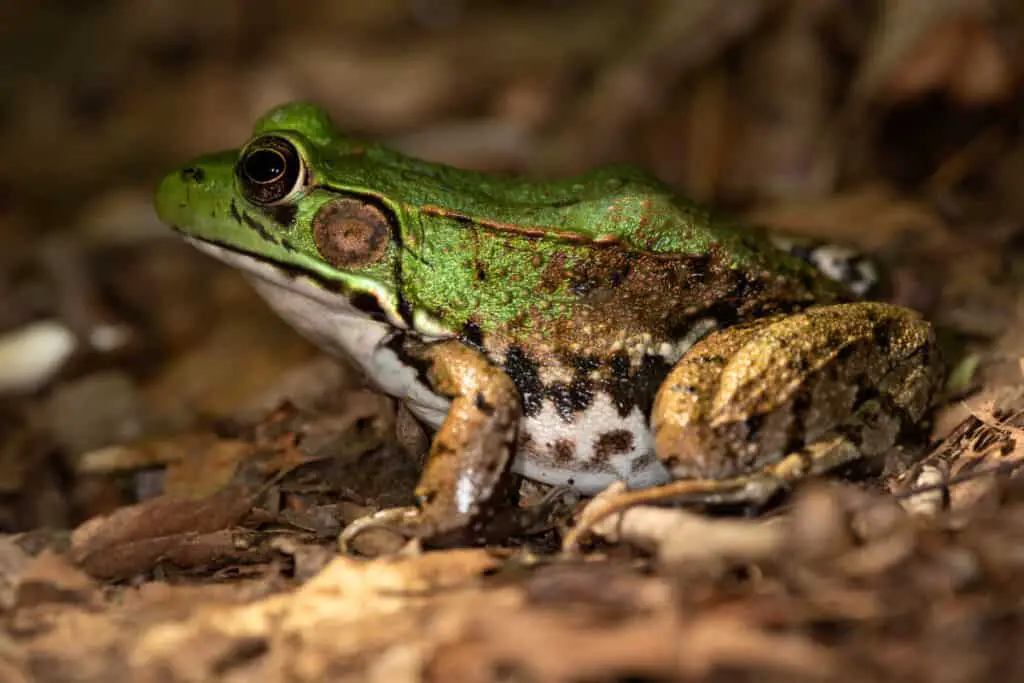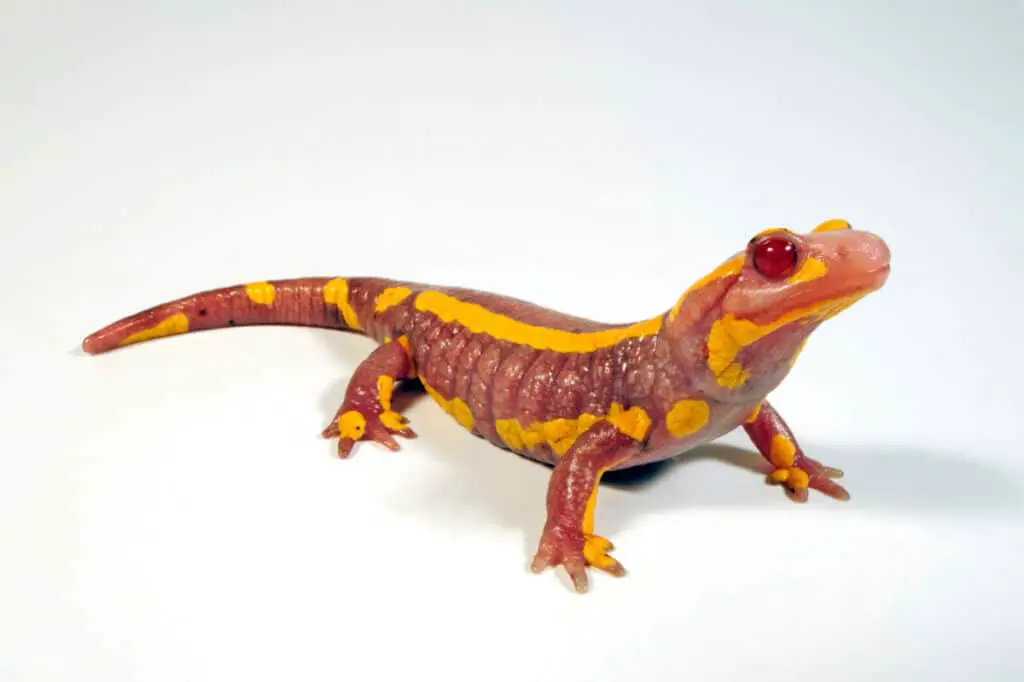Amphibians are one of the earliest living organisms on Earth, and their ability to adapt to changing environments has enabled them to survive for millions of years.
In this article, we will explore how amphibians have adapted to their changing environment over time. We’ll look at the physical and behavioral adaptations that have allowed amphibians to survive in a variety of environments.
By understanding how amphibians have evolved with their surroundings, we can better appreciate their special place in our world.

Physiological Adaptations
Amphibians have evolved various physiological adaptations that enable them to survive in changing environmental conditions.
Their skin is highly permeable, allowing them to absorb oxygen from the atmosphere and water simultaneously. This adaptation helps amphibians cope with fluctuating levels of oxygen availability in their habitats.
Amphibians are also able to adjust their metabolic rate according to the availability of food and temperature. In cold temperatures, they can slow down their metabolism and reduce their energy expenditure, while in hot temperatures they can speed up their metabolism to maintain a constant body temperature.
Amphibians also possess an innate ability to remain metabolically active even during periods of drought and hibernation. This allows them to conserve energy until favorable environmental conditions return which enables them to quickly resume activity when conditions improve.
As a result, amphibians are able to survive in changing environments by rapidly adapting their physiology in response to fluctuations in their environment.
In addition, some species of amphibians have developed behaviors that allow them to take advantage of resources available at different times throughout the year. For example, some species migrate long distances between different bodies of water during seasonal changes in order to reproduce or feed on more abundant prey items.
Behavioral Adaptations
Amphibians have adapted to their changing environment through several behavioral adaptations. One such adaptation is the ability to migrate in search of favourable conditions. This is common among species such as salamanders and frogs, who will travel long distances in order to find a suitable habitat for breeding.
Another adaptation observed among amphibians is the ability of some species to aestivate, or enter a state of dormancy during periods of extreme drought or heat. This allows the animals to survive conditions that would otherwise be too harsh for them to withstand.
Many species also exhibit an interesting behavior called ‘cryptic coloration’, where they blend into their surroundings in order to avoid being detected by predators. This can be seen in various species including tree frogs, which have evolved skin patterns that match their environment, making them almost invisible at times.
Additionally, many amphibian species also take advantage of environmental cues when it comes to reproduction and laying eggs. For example, some species are known to release reproductive pheromones when environmental conditions are right so they know when it’s time to breed and lay eggs.
In addition to these behaviors, amphibians are also known for their use of communication techniques like vocalization and movement displays. For instance, some frog species use loud calls as a form of advertisement or territorial defense while others rely on body movements such as limb waving or jumping when communicating with potential mates or competitors.
All these behaviors help amphibians survive and thrive in an ever-changing environment.
The Fantastic Five: Exploring the Types of Amphibians
Camouflage
Amphibians have adapted to their environment by using camouflage.
One way they have done this is through coloration. Many amphibian species have evolved to blend in with their environment, usually with a drab brown or green hue. This helps them to hide from predators and avoid detection. Camouflage also works for amphibians that are active during the day, since it allows them to blend in with their surroundings and be difficult to spot.
Another adaptation that amphibians use for camouflage is patterning. Many frog species have evolved intricate patterns of stripes, spots, blotches, and other markings on their skin that help them blend into the background of their environment.
For example, some frogs living deep in the rainforest are brightly colored reds and yellows which helps them blend into the foliage where they live. This is especially useful for hiding from predators in dense vegetation.
Amphibians also use behavior as an adaptation for camouflage. Some frogs will freeze when they sense danger, while others may curl up or flatten themselves against the ground or a tree trunk so they become almost invisible against whatever surface they’re sitting on. This allows them to stay safe from potential threats until the danger passes.
By using these various tactics of coloration, patterning, and behavior – amphibians can successfully adapt to changing environments and survive in a variety of different habitats.
Anatomical Modifications
In addition to camouflage, amphibians have adapted to their changing environment through a variety of anatomical modifications. These adaptations are often linked with the amphibian’s habitat, whether it be aquatic or terrestrial.
Aquatic adaptations include webbed feet and flattened tails that allow them to move quickly through the water. This can also help them escape predators or catch prey more easily.
Meanwhile, terrestrial adaptations may include longer limbs for better maneuverability on land, as well as drier skin that is better suited for life out of the water.
Amphibians are also able to change their body shape and size depending on the available resources in their environment. They can become larger or smaller to regulate body temperature and conserve energy while they hibernate during periods of dry weather or drought.
Additionally, some species have evolved thicker skin which helps protect them from parasites or other pathogens in their environment.
Overall, amphibians are highly adaptable creatures and have developed a range of features that allow them to survive in a variety of environments. From changes in coloration for camouflage purposes to alterations in body shape and size for resource regulation, amphibians continue to demonstrate remarkable evolutionary traits that enable them to thrive even in changing conditions.
Reproductive Adaptations
Amphibians have developed a number of reproductive adaptations that have allowed them to successfully reproduce and survive in changing environments.
One adaptation is the ability to lay eggs in water, which has enabled amphibians to populate areas with standing or slow-moving bodies of water. This adaptation has allowed amphibians to expand their range into both temperate and tropical climates and exploit resources from these different habitats.
Another adaptation is the production of an external shell around their eggs, which helps protect them from predation and other environmental hazards. The shell also helps maintain the internal temperature of the egg, allowing for greater control over embryo development. Additionally, this allows amphibian embryos to hatch asynchronously, meaning that some will take longer to develop than others, further increasing their chances of survival in an ever-changing environment.
Finally, many amphibians are able to produce multiple clutches of eggs throughout the year, which gives them a greater chance of finding suitable conditions for hatching and surviving. This strategy has enabled amphibians to outcompete other species in a variety of habitats while also giving them a better chance at thriving in fluctuating environments.

Conclusion
To conclude, amphibians have adapted to their changing environment in a variety of ways.
Physiologically, they’ve developed unique characteristics to survive in different habitats, such as camouflage and anatomical modifications.
They’ve also adopted certain behaviors that help them evade predators and find food sources.
Reproductive adaptations are another way amphibians have adapted to their environment; they can lay eggs in drier regions or rely on internal fertilization if the habitat is wetter.
All these adaptations have allowed amphibians to thrive even when their environment shifts drastically.
It’s an admirable example of how organisms can evolve over time in order to stay alive!

